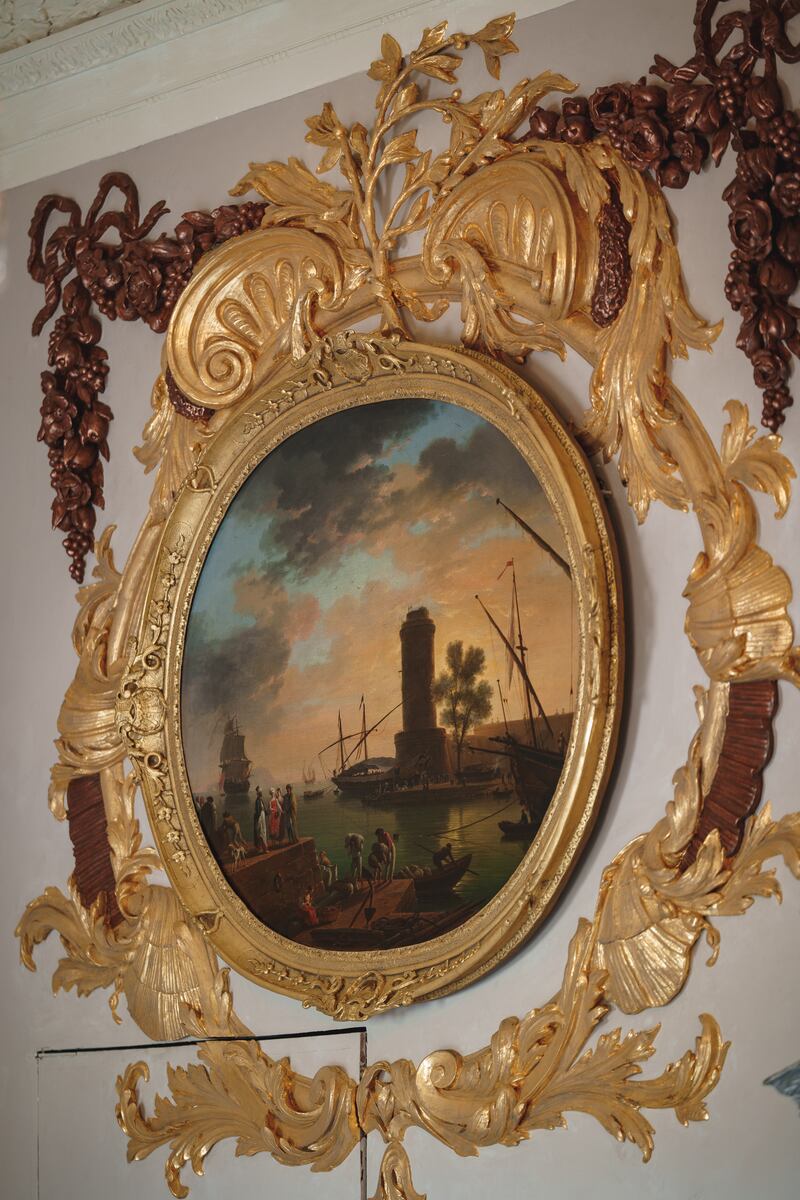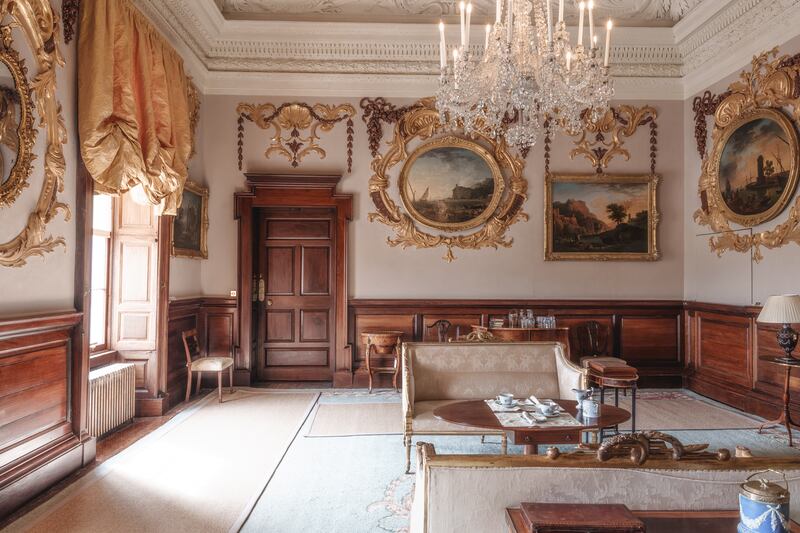The most sumptuous drawingroom in Ireland is about to be revealed in Russborough House, Co Wicklow, following a carefully-researched restoration programme to reinstate its mid-18th century splendour as a “timeless masterpiece of refinement and sophistication”.
Commissioned by Joseph Leeson, first Earl of Milltown, Russborough is one of the country’s finest surviving Palladian stately homes – second only to Castletown House in Co Kildare. It was designed for Leeson by Richard Cassels, the brilliant German-born architect, whose work includes Leinster House and the Rotunda Hospital in Dublin, Carton House in Co Kildare and Westport House in Co Mayo.
Leeson (after whom Dublin’s Leeson Street is named) filled his new mansion with works of art – including paintings by Titian and Canaletto – collected on trips to Italy in 1744 and 1751. These were among 200 pictures bequeathed by the last Countess of Milltown to the National Gallery of Ireland, which led to the construction of its Milltown Wing in 1902.
French painter Claude-Joseph Vernet, who had a studio in Rome for 20 years patronised by British aristocrats on the “grand tour” circuit, was commissioned by Leeson to paint a series of oval landscapes depicting times of the day – morning, midday, evening and night – which were to be displayed in the Russborough’s front drawingroom.
READ MORE
The Vernet Drawing Room, as it has come to be called, also contained four rectangular landscapes on this theme by the same artist set beneath its exuberant baroque ceiling, with the oval paintings framed by swirling cartouches, all brilliantly executed by an unidentified mid-18th century plaster craftsman known only as “the St Peter’s Stuccodore”.
Over time, as the house changed hands, all eight Vernet pictures were dispersed from Russborough, with the four ovals known to have been sold in Paris in 1926. But its last private owner, Alfred Beit, was determined to track them down and did so in 1968, when he paid a small fortune to acquire the pictures from a New York financier.
More recent “chance discoveries” – as Pauline Swords, Russborough’s head of collections and conservation, puts it – led to the recovery and authentication of three of Vernet’s missing rectangular “times of the day” pictures from 1751, with their purchase generously funded by the Apollo Foundation, set up in 1984 to benefit the fine arts in Ireland.


All four Vernet ovals required significant conservation treatment, including removal of yellowed varnish and poor overprinting from previous restoration, retouching and varnishing, along with repair and regilding of the frames. Gilding with gold leaf and partly “coppering” the cartouches took restoration artist Theresa Cuddihy more than 10 weeks to complete.
Forensic analysis by historical paint consultant Catherine Hassall in 2015 established that the drawingroom was originally painted in soft white distemper, hidden by layers and layers of matt emulsion applied by different owners over the years. So, one of the essential tasks was to return the baroque ceiling and walls to their earliest colour scheme.
The superb mahogany doors and panelling did not require any restoration and look even better now in their refreshed context. A large 17th-century copy of Guercino’s Triumph of David – ghoulishly holding up the head of Goliath – hangs above the magnificent grey marble breakfront fireplace. This too was bought by Joseph Leeson in Italy.


Windows are adorned by rich, golden ruched curtains made by Julia Davis Goff. These were designed by David Sheehan, of Sheehan & Barry Architects, who also contributed to the restoration of the Vernet Drawing Room, as did the Irish Georgian Society, which gave its premier conservation award in 2011 to Howley Hayes Architects for their work in Russborough.
A discreet veil has been drawn over the cost of restoring “Vernet’s Heart of Gold”, but it would be fair to say – as its sponsors do – that this extraordinary project has “revealed something that has never been seen in our lifetime, with startling effect”, offering visitors “a captivating vision of a bygone era” within sight of the sublime Wicklow Mountains.













